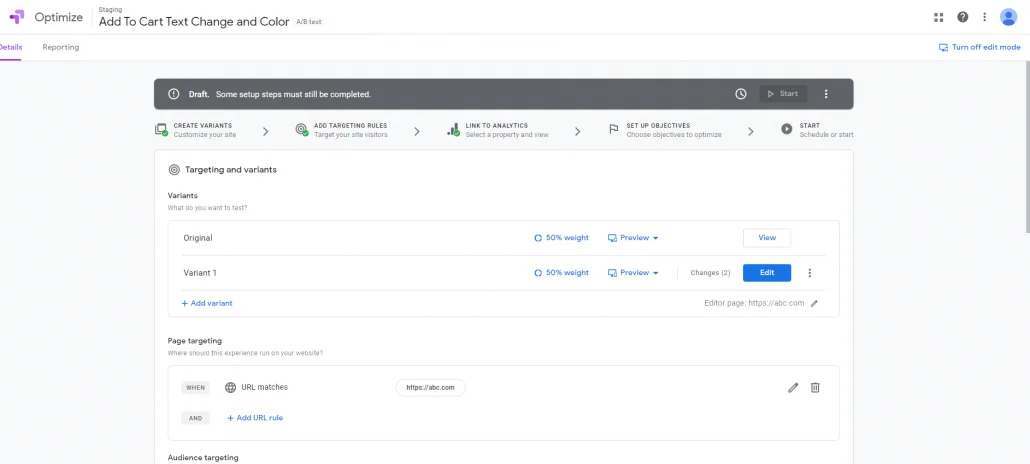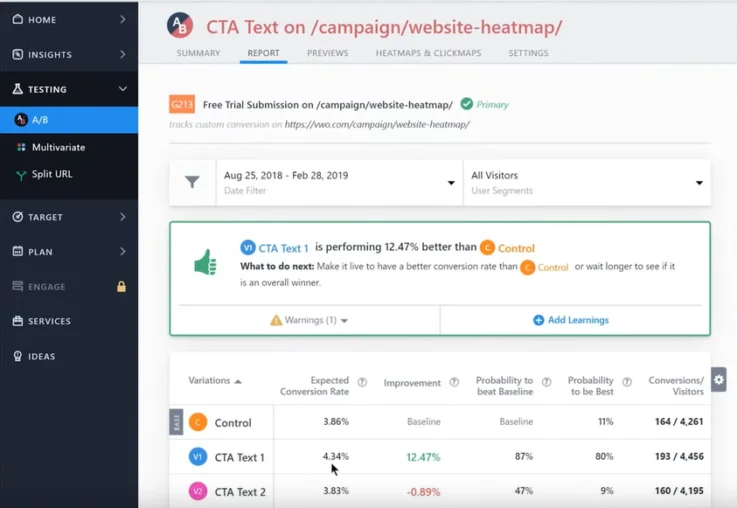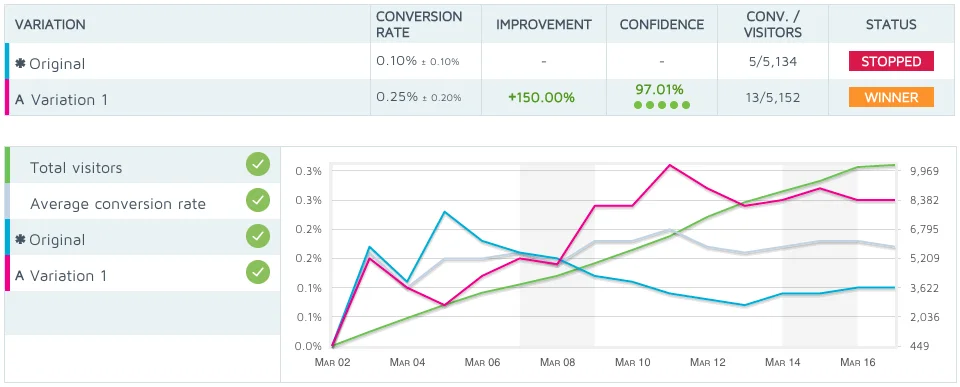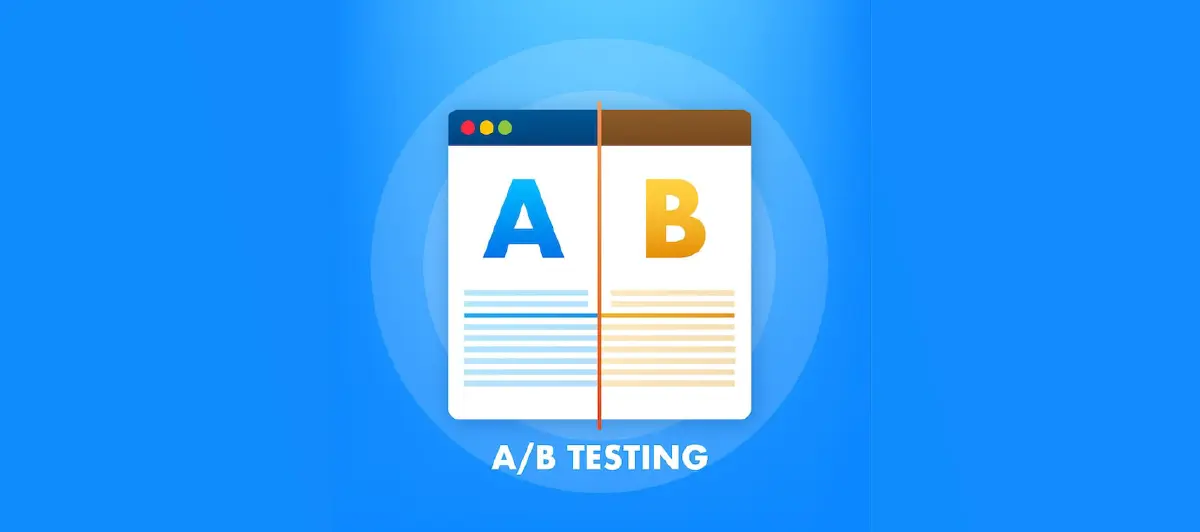What is A/B Testing and how to do A/B testing?
Quick Summary: Explore the significance of A/B testing in refining marketing tactics, enhancing ROI, and fortifying campaign effectiveness for success.
Introduction
Marketing campaigns will only sometimes be successful, no matter how much research you do. A/B testing is an excellent medium to promote products online and help you prepare the best marketing strategies for your business.
A website copy test or a sales email test can be conducted using this tool. If you do this, you can find the best-performing version of your campaign before spending all your budget on materials that could be more effective. The A/B testing platform is time-consuming, but its advantages make it worthwhile. Furthermore, the A/B test platform is pivotal for enhancing marketing effectiveness.
A/B Testing optimizes a way to create an online business by comparing two variations of a webpage to determine which performs better.
Many custom ecommerce solutions leverage the most impactful A/B testing to elevate ROI, reduce failure risks, fortify marketing strategies, and foster success.
This blog emphasizes A/B testing significance in refining marketing strategies, how to boost ROI, and how to strengthen campaign effectiveness for success. Let’s get started!
What is A/B Testing?
A/B Testing(or split testing) is the process of comparing two versions of the same webpage with each other to determine which one performs better. Furthermore, A/B test software is nothing but a user experience research methodology. In the field of statistics, we call it statistical hypothesis testing or “two-sample hypothesis testing.”
A/B tools are used to identify the user’s satisfaction and also find out the user’s engagement with new online features or products. Additionally, AB testing means not only testing between two variants; we can test against multiple variants, called the A/B/C test.
How does A/B Test work?
Suppose you want to create a personalized e-commerce website and perform an A/B test where you want to change the Add to Cart button and determine which is influencing the user.
Let us consider in any e-commerce website we are running an A/B test where we change the Add to Cart button and determine which is influencing the user or not?
- Define test hypothesis(Goals): In this step, you set up the goals you want to achieve from this test.
- Example: Our goal is to get the maximum number of click actions as compared with control and get more conversion rate.
- Design the test: In this step, we simply research a website and create something attractive where users influence more.
- Example: In our design, we have changed the size and color of the Add Cart button
- Old Design:
- Updated Design:
- Gather data: We run the A/B test on testing tools like Google Optimize, vwo, optimizely, A/B Tasty, etc. for some time duration with splitting traffic between both versions.
A/B Testing Tool
Check out a few tools that will help you to conduct A/B tests:
1. Google Optimize Tool for A/B Test
Google optimization provides a free website optimization tool that online marketers and webmasters use to make user conversion rates and user satisfaction by continuously testing different combinations of website contents.
To make any test on google optimize is a very simple process, you don’t need to have any extra prior knowledge of any technology. Any non-technical person is also able to work on google optimize.
Google optimize provides us with target devices by their category where we can set targets to specific devices.
Google optimize also provides us to create a Split test, redirect test, and personalization test also.
The main advantage of using google optimize is to create separate pages of a single test if we have multiple URL tests.

2. VWO Tool
Recently fast-growing companies use the VWO tool for AB testing to implement AB testing on their websites and calculate conversion rates easily.
To use VWO, you only need to add SmartCode to your website and make tests on vwo.
When any user loads a page the vwo servers interact with code you added to your website and act accordingly.

Analyze the result: In this step, we calculate the conversion rate where which version has performed better.

3. Optimizely
Optimizely is an excellent digital experience platform that provides features such as web Optimizely is an excellent digital experience platform with features like web content management systems and personalization engines.
Furthermore, developers can leverage these platforms to execute low to no-code experiments, SDK-based server-side testing, and omnichannel experimentation across various mobile and OTT devices. Again, Optimizely has a Customer Data Platform (CDP) that harmonizes customer data and enables highly personalized campaigns across multiple channels.
4. AB Tasty
AB Tasty is a digital marketing and experimentation tool that enables businesses to optimize their websites, mobile apps, and other digital assets through a/ b testing, personalization, and user engagement features. Furthermore, testing and refining different strategies helps improve user experience, increase conversion, and enhance overall digital performance.
5. Adobe Target
Adobe Target is enterprise-grade software that fulfills all the needs of mature experimentation teams. Furthermore, you can conduct A/B and multivariate tests on your digital properties to create the most effective combinations of content, user experience, and layout. Additionally, it allows testing and personalization at scale, which is impossible with manual methods.
Why you should do an A/B test
A/B testing helps individuals, businesses, and companies to analyze user data and make informed decisions based on the user experience. Furthermore, A/B testing software provides ideas that allow businesses to optimize their experiences that impact user behavior the most. Let’s check why you should conduct A/B testing:
1. Solve visitor pain points.
There is usually a purpose behind a visitor’s visit to your website. Furthermore, they may be looking for information about your product or service, buying a particular product, reading/learning about a specific topic, or browsing. Visitors may face some common pain points while fulfilling the objective.
Sometimes, the copy can be confusing, or the CTA buttons are difficult to locate. An unsatisfactory user experience will impact the conversion rate. It is crucial to analyze data via Google Analytics and website surveys that will help solve the user’s pain points.
2. Get better ROI from existing traffic.
Most experienced optimizers realize that acquiring quality traffic for your website is expensive. Furthermore, the A/B testing tool allows you to make the most of the existing traffic for conversions without spending expenses to acquire new traffic.
Even the smallest changes to your website can result in significant increases in conversions as a result of A/B testing.
3. Reduce bounce rate
Bounce rate is one of the crucial metrics that will help you to analyze the website’s performance. Moreover, while there are many reasons why your website’s bounce rate is high, some are too many options, misaligned expectations, confusing navigation, excessive technical jargon, etc.
Different websites have different goals and cater to varying needs of the audience. Hence, there is no single solution to minimize bounce rates. However, performing a/b testing will resolve all your problems.
Furthermore, through split testing, you can perform tests on the multiple variations of an element of your website until you get the best possible results. Additionally, this will not only help you to identify the friction and visitor pain areas but also help you to improve user experience. Overall, this will help you retain the customers long-term and ultimately boost conversion rates.
4. Make low-risk modifications
With A/B testing, you can make small incremental changes to your Web application without redesigning the entire web page. Furthermore, it will minimize the risk of jeopardizing your present conversion rate.
A/B testing maximizes the output by letting you target your resources with minimal modifications, enhancing your ROI.
Let us understand with the help of examples. Suppose you need to change the product description page. You can remove or update your product pages using A/B testing. Furthermore, you do not know the reaction of your visitors to these changes.
By performing an A/B test, you are ascertain about the response of your visitors. The introduction of a new feature is another example of a low-risk modification. By launching the new feature as an A/B test, you can determine whether your audience will appreciate the new feature you’re suggesting.
Additionally, modifying your web application will not pay off in the short and long run. Testing the application and making changes will give you a more productive outcome.
5. Achieve statistically significant improvements
As A/B testing is entirely based on data, there is no room for gut emotions, guesswork, or intuitions. By analyzing metrics such as time on the page, demo requests, cart abandonment rate, click-through rate, etc., you can determine a “winner” and a “loser” quickly.
Conclusion:
After reading the comprehensive guide on A/B testing, you are ready to prepare your optimization roadmap. Follow each step to resolve the major and minor mistakes that neglecting data can bring. A/B testing boosts your website conversion rate and prioritizes it for sustained success.
FAQ
What is the definition of A/B testing?
The purpose of A/B testing is to analyze the variations of a web page by testing users’ responses to variant A vs. variant B.
What is A/B testing in digital marketing?
Digital marketers use A/B testing to analyze which website version converts better when presented to visitors under different conditions.
Why do we do A/B testing?
There are various reasons why we execute A/B testing. Furthermore, a few include improving website conversions, unraveling visitor pain points, and reducing the bounce rate.
What are A/B testing and multivariate testing?
A/B testing involves splitting traffic between two or more versions of an application. Furthermore, Multivariate testing aims to find the best combination of a few critical elements of a page by testing several variations against each other.
What are AB testing examples?
A/B testing is a controlled experiment in which you run two different product or website versions simultaneously and see which performs better. For example, you might run your current sales page against a new version with a section that addresses objections.







